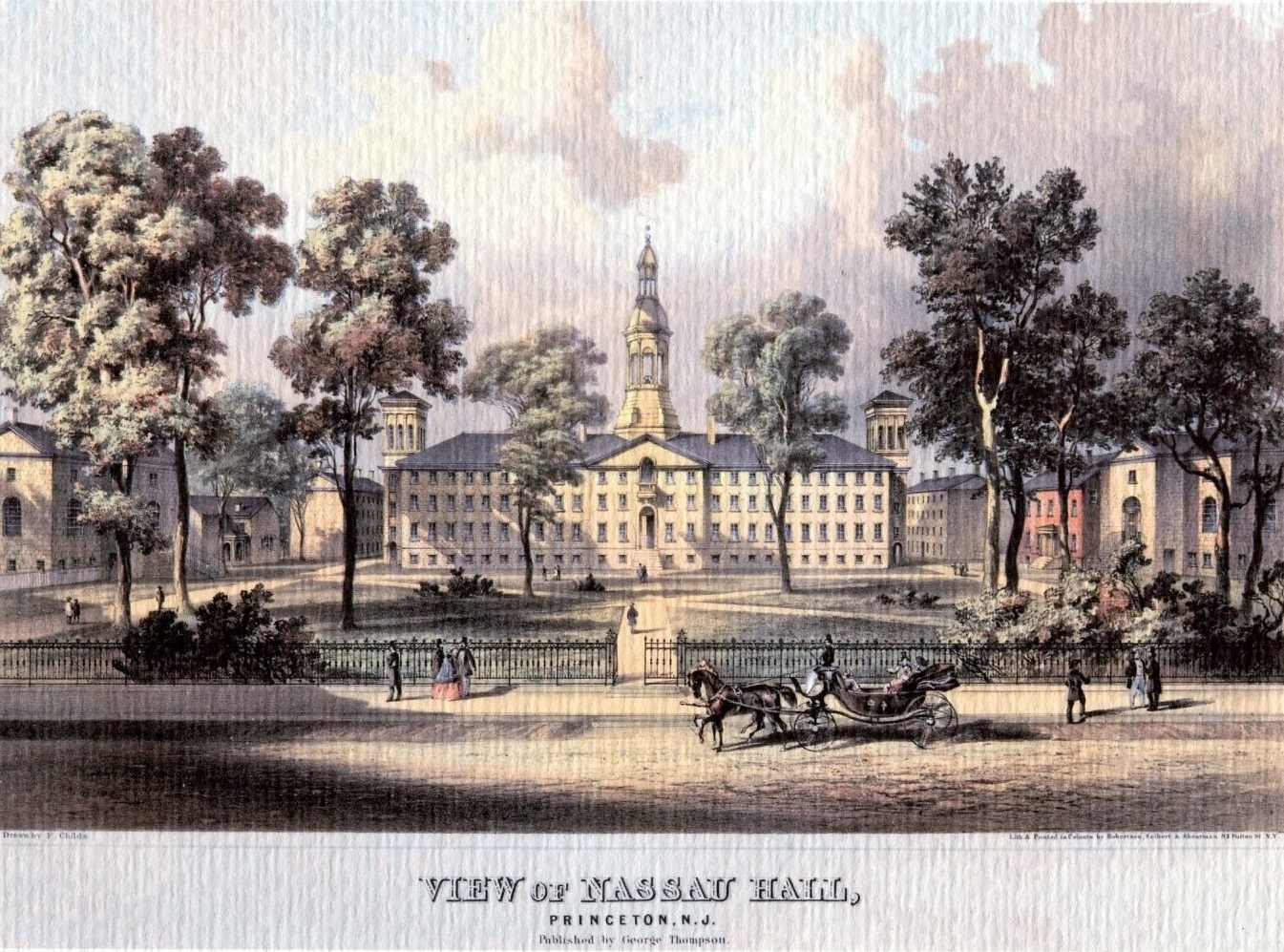By April C. Armstrong *14
Dear Mr. Mudd,
Who was the first Catholic student to enroll at Princeton University?

This question, like other questions about firsts, isn’t one we’re able to answer definitively, as I’ve previously written when addressing the question of Princeton’s first Jewish student. Princeton University was founded as a non-sectarian institution open to all regardless of religious denomination in 1746, and did not formally collect information about religious background or views of its students until 1871.
Because we don’t have comprehensive records about alumni, the best we can do is offer information about earliest identifiable records. There are some alumni, especially from the 18th century, about whom we know little to nothing, some of whom may well have been Catholic. However, even trying to pinpoint an earliest identifiable record is a somewhat elusive goal, because unlike some other aspects of personal identity, religious views can change over time. Just because someone was Catholic as a child or in later life, that doesn’t mean that the person in question was Catholic at the time of enrollment or as a student. In such cases, we’re plagued not only by the problems of what records may or may not exist, but also by problems of definition.
Indeed, we know that students often change religious affiliations while in college. For example, a few Japanese students converted to Protestant Christianity while attending Princeton in the 1870s, and we’ve previously written about a group of students who joined a new religious group in the 1980s. When we ask who the first Catholic student to enroll might have been, we must also account for the reality of change.
Despite sparse records available, we do have some indications that students with Catholic backgrounds were in attendance in the 18th century, including Francis Peppard, Class of 1762, who might have been Catholic before moving to New Jersey from Ireland (he later became Presbyterian); John Campbell, Class of 1770, who might have been Catholic, but later converted to Presbyterianism (records are unclear); and David Meade, Class of 1787, who was raised Catholic but in later life identified as Anglican (records haven’t shown when that happened, so he may not have been Catholic while at Princeton).

The earliest identifiable, definitive record of Princeton having a Catholic student seems to have been (at least until further research confirms otherwise) William Gaston, Class of 1796. He attended Georgetown Academy in Washington, D.C., a Catholic institution, before coming to Princeton. Controversies over his religion followed him throughout his career as an elected official in North Carolina, where the state constitution seemed to bar Catholics from holding public office until 1835. In 1836, Princeton awarded him with an honorary doctorate. Due to his religion, this provoked a Baltimore newspaper to express strong disapproval: “We pronounce it a most gross outrage on all Protestant, and under the circumstances, on all proper feelings.”
However, it’s also important to consider what significance it might carry if we did know who the first Catholic student who enrolled at Princeton was. As I said in my post about the first international students, such questions are usually motivated more by a desire to know how Princeton has changed and diversified over time than to pinpoint an exact person’s identity. Here, your question might really be more about when Catholics would have felt they were a part of the campus community. Though we find the occasional Catholic student earlier, enough students to form a community would not have been enrolled until around the turn of the 20th century. Michael Dunn, for example, is the only Catholic listed in the Class of 1880’s Nassau Herald, while the Class of 1899 has only John Francis Cregan, and most of the 19th-century yearbooks don’t list any Catholics at all.
Three Catholic students were among the 263 members of the Class of 1906, after which one began to see more representation overall–5 in the Class of 1907, 8 in the Class of 1908, and 5 in the Class of 1909. A Catholic Club formed by 1915, and I found more than 20 Catholic students in the Class of 1916. According to Frederick Houk Borsch’s Keeping the Faith at Princeton, a steady 7-8% of the student body was Catholic during the 1920s-1940s. In 1928, Princeton hired its first slate of denominational chaplains, including Fr. Quitman F. Beckley, who also served as Director of Catholic Activities on campus. The early 20th century thus marked a change in religious diversity at Princeton, making it more popular among and open to Catholic students.
Sources:
Borsch, Frederick Houk. Keeping Faith at Princeton: A Brief History of Religious Pluralism at Princeton and Other Universities. Princeton: Princeton University Press, 2012.
“Collectanea II.” Baltimore Literary and Religious Magazine 2, no. 3 (March 1836): 103.
Hikoichi Orita Diary (AC033)
Gaston, William. Financial Accounts. Booth Family Center for Special Collections, Georgetown University Library.
Princeton University Publications Collection (AC364)
For further reading:
Armstrong, April C. “Princeton 275: The Charter of the College of New Jersey, 1746 and 1748.”
_________. “Dear Mr. Mudd: Who Was Princeton’s First International Student?“
__________. “Dear Mr. Mudd: Who Was Princeton’s First Jewish Student?”
Cho, Christina. “The Church at Princeton, Part II: The Members of TCAP.”

